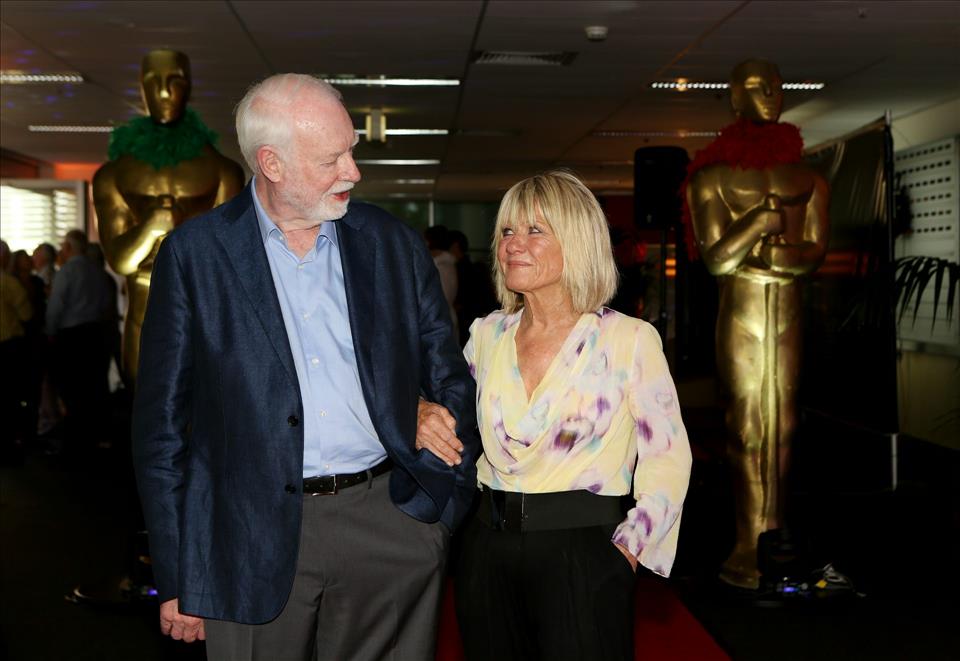
For The Love Of Cinema: What We're Missing From At The Movies, 10 Years After Its Last Season
Reflecting on the significance of program in this anniversary season, there is much to give present-day readers pause for thought.
The last episode of At the Movies brought with it a sense of the end of an era. Academic Huw Walmsley-Evans worried this might be the last picture show:
Critic Luke Buckmaster saw Margaret and David's retirement as marking a“symbolic end of the golden age of traditional film reviewing in Australia”.
Thanks to the internet, there is no shortage of information about films, or taste judgements about the moving image today. But the promise of diversity of perspectives does not always hold up.
What we are now getting less of is well-practised, entertaining and accessible cultural mediation
Beyond summary judgementAt the Movies had no shortage of critics . Reviewing, especially on television, is often seen as a poor relative to the kind of respected critique found in film journals and essays.
It is true that any broadcast review faces a highly circumscribed format, and a lot of emphasis is often given to story synopsis. Also, because of the way promotion works, information about actors and directors is deemed crucial.
Following the conventional idea that the review is written for consumers, there is a temptation to jump into a loud summary judgement of the type that might appear on posters.
But Margaret and David did not always follow the pattern of a generic or typical review.
Over the ten years of At The Movies, there were seven films which received five stars from both Margaret and David: Brokeback Mountain (2005); Good Night, and Good Luck (2005); No Country for Old Men (2007); Samson & Delilah (2009); A Separation (2011); Amour (2012); and Birdman (2014).
These seven reviews provide a glimpse into Margaret and David's style of reviewing – a style they have been able to playfully extend and subvert .
None of these reviews are led by summary judgements. Instead, they tend to be descriptive and designed to draw the viewer into engagement with the film through a recap of the story, context or an aspect of critical reception.
The pattern goes something like this: after a synopsis of the main story and key complications, a claim is made as to the value of the film. The claim is backed up by an elaboration laced with information about the film, entailing an observation about craft such as performance, dialogue, directing, writing, cinematography, editing or music.
The elaboration is carried over into the ad lib section for more free flowing discussion and exchange.
The synopsis is presented over clips from the films, and the claim is presented to camera, with a feeling of adjudication: a sense this is measured testimony to what has been seen and heard, what they think the audience will gain from it, and analysis of how well the film has been“made” or“done”.
This structure creates a deliberative approach that is a feature of many At the Movies reviews. For Brokeback Mountain, Margaret's claim is“This exquisite film was made by Ang Lee who seems to be able to bring such truth to his films, despite the wide variety of genres and cultures that he explores.”
Lee“has made all the right choices,” with Margaret observing“every shot has a point”.
For Good Night, and Good Luck, Margaret says“there's nothing monochromatic about [director George] Clooney's passion for his subject or the importance of his message,” with“the way he's approached it” being the main point of elaboration.
For Samson & Delilah, Margaret says“This is for me one of the most wonderful films this country has ever produced”. The elaboration is,“It is exquisitely made, it's full of discipline”.
Birdman, in Margaret and David's very last review together, is“wonderfully directed, beautifully performed by a stellar cast”, according to Margaret, the elaboration being it is“really beautifully written and stunningly performed and beautifully made”.
Logos, pathos and ethosWe are not looking simply at reviews led by summative judgement, but an elaborate and deliberative chain of argument or reasoning. Alongside logos, the appeal to reason or logic, other terms from classical rhetoric provide useful analytical tools.
The pathos, or feeling expressed in the review (frequently expressed by being“moved”), is usually tethered to the claim and the way the film is made, and the way it makes the reviewer feel.
Ethos, integrity of character, becomes key to understand the logic of the review, but is displaced away from the critics and turned into an issue related to filmmaking and its treatment of the audience.
There are exceptions, and there are occasions where disdain is offered rather than praise and Margaret and David step out of the polite version and offer harsh, outright critique.
This is usually reserved for a film that has not done things well or treated audiences shabbily. Even on these occasions, there is usually some appeal to open-mindedness and a sense that the hosts are there to look out for the audience's interests.
The dynamic between Margaret and David was essential to what made the program entertaining. However, beyond interest in the friction of their screen partnership we should also focus on their love of cinema, the valuable work they performed as informed cultural mediators – and ask how that is being supported today.
This article draws on the author's forthcoming book At the Movies, Film Reviewing, and Screenwriting: Selective Affinities and Cultural Mediation, to be published by Intellect Press.

Legal Disclaimer:
MENAFN provides the
information “as is” without warranty of any kind. We do not accept
any responsibility or liability for the accuracy, content, images,
videos, licenses, completeness, legality, or reliability of the information
contained in this article. If you have any complaints or copyright
issues related to this article, kindly contact the provider above.
















Comments
No comment